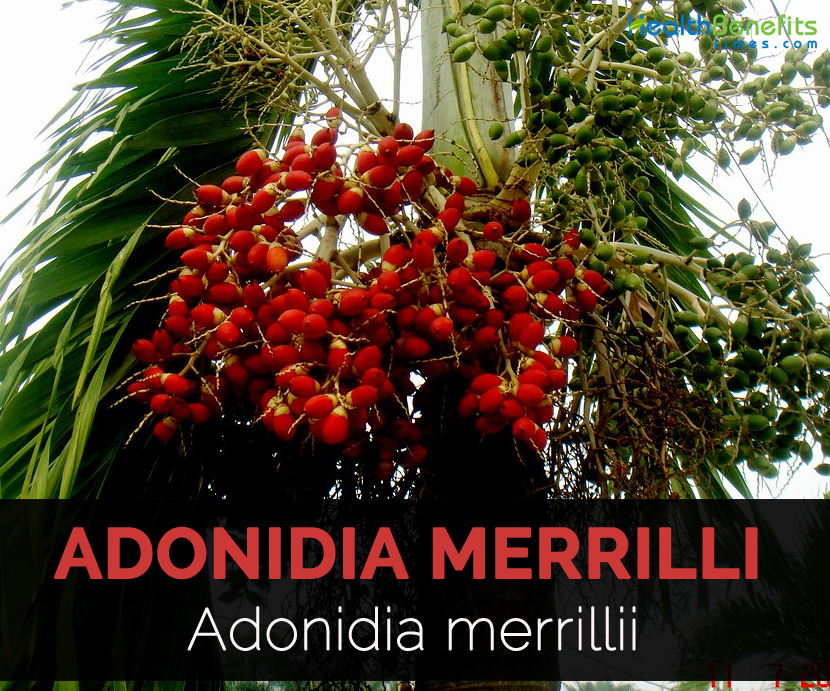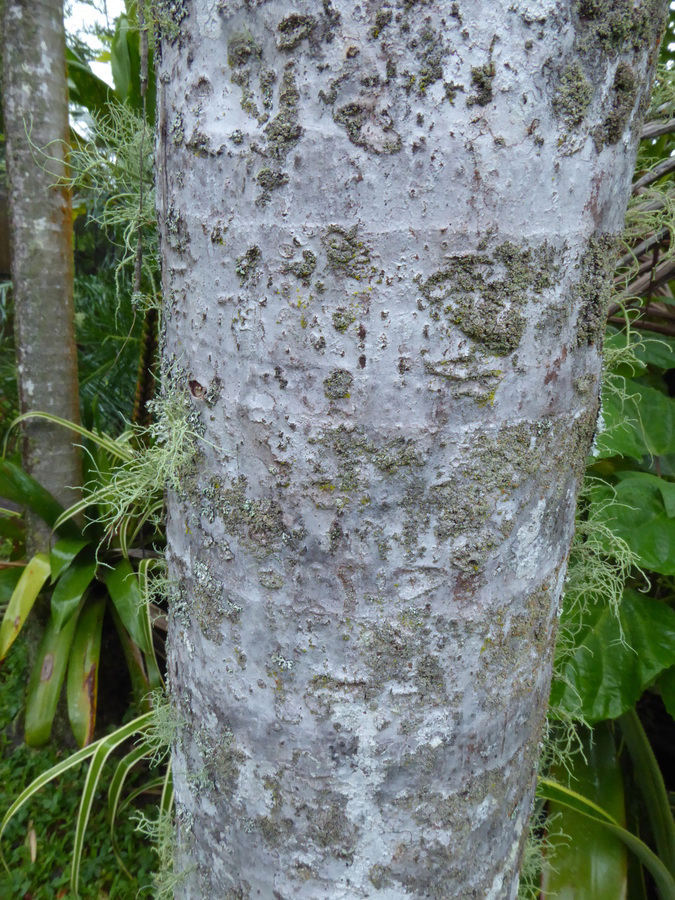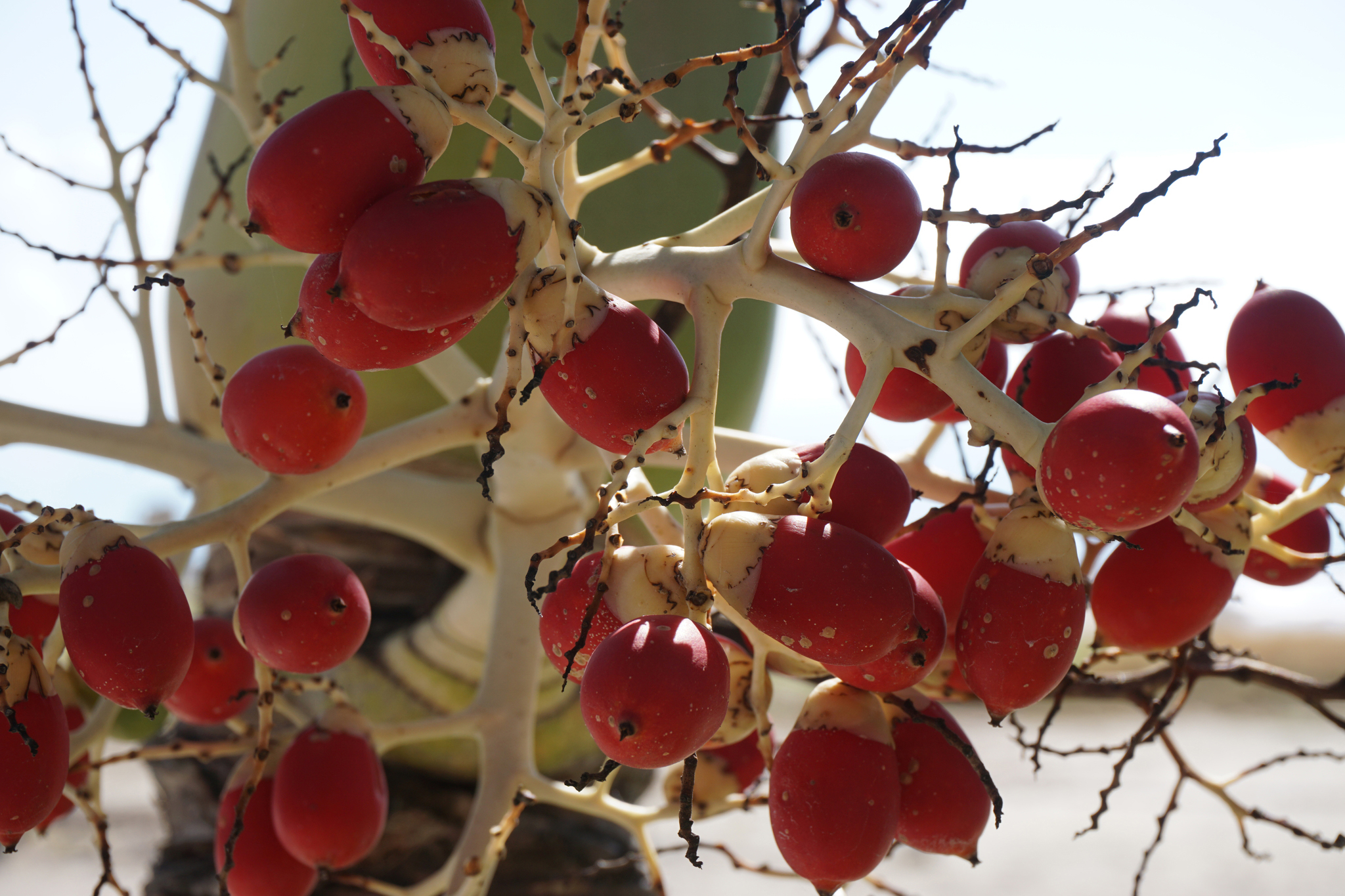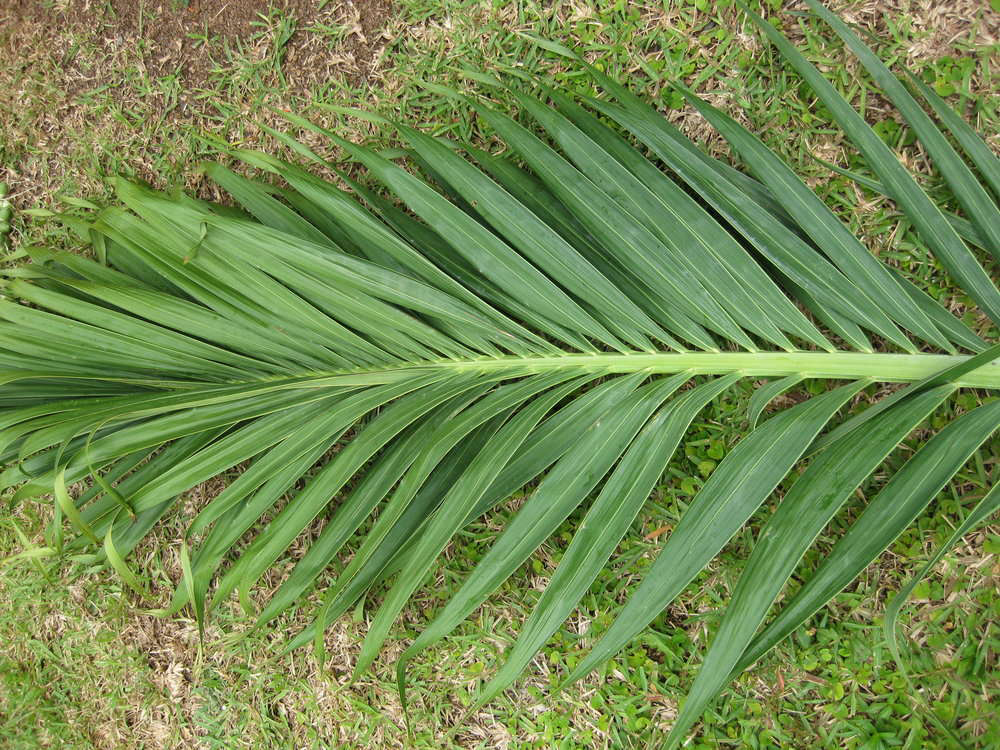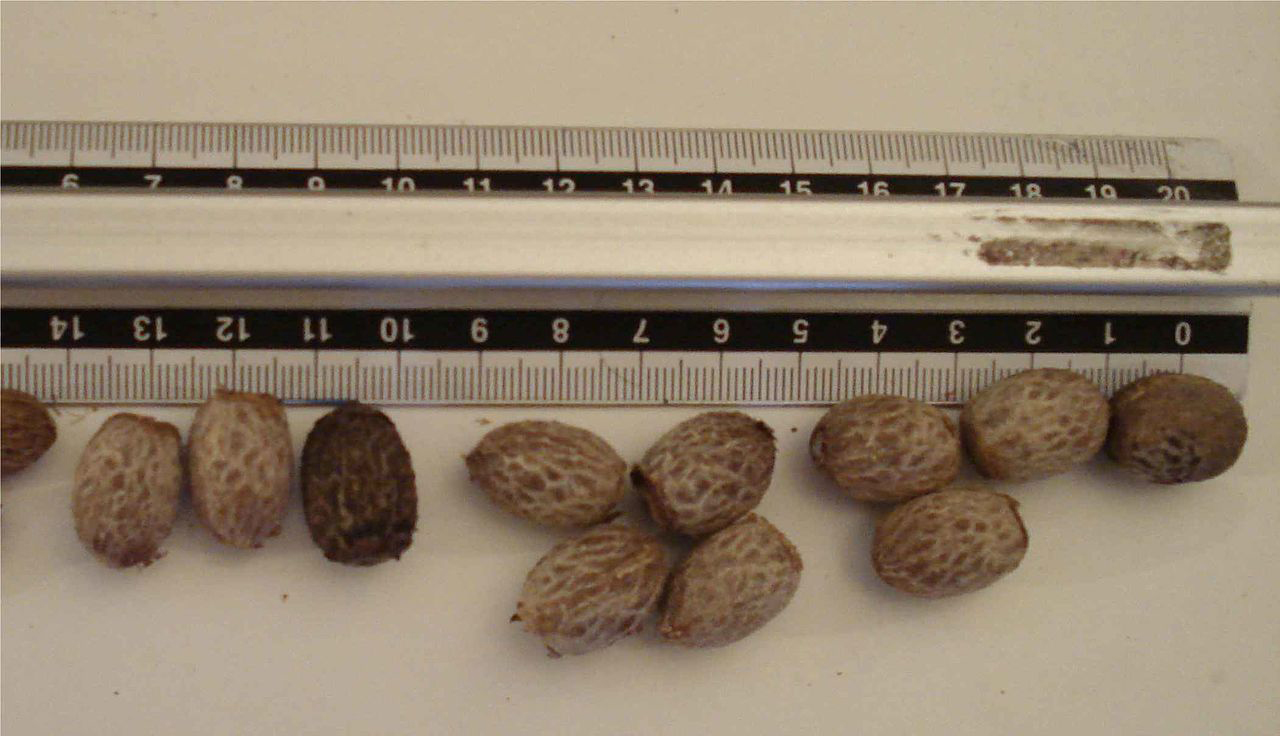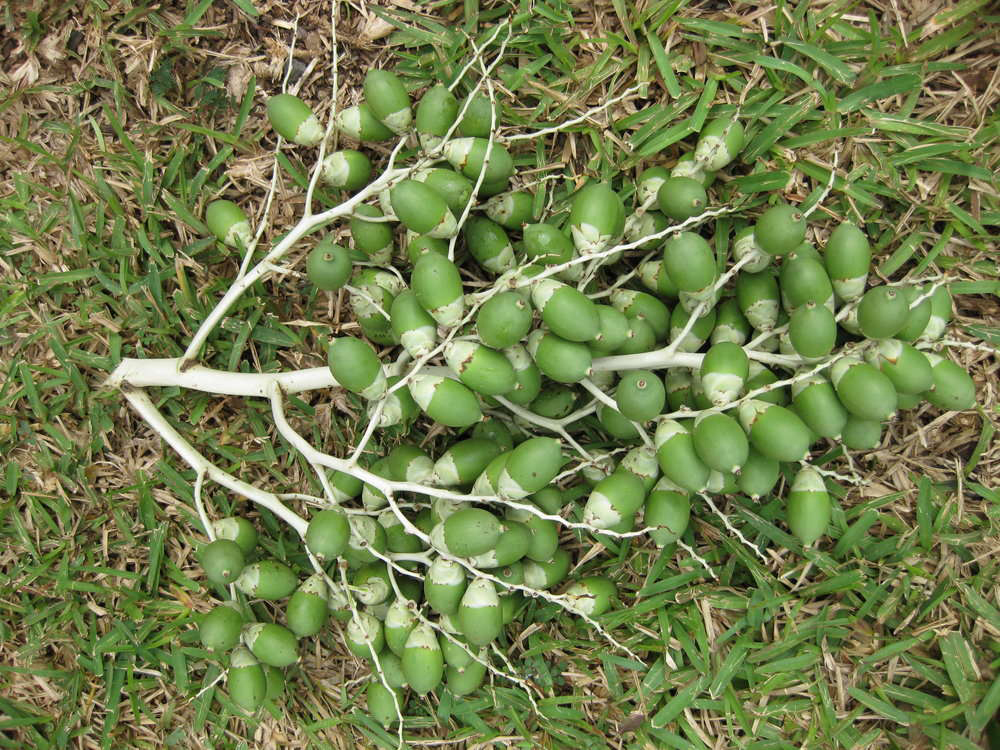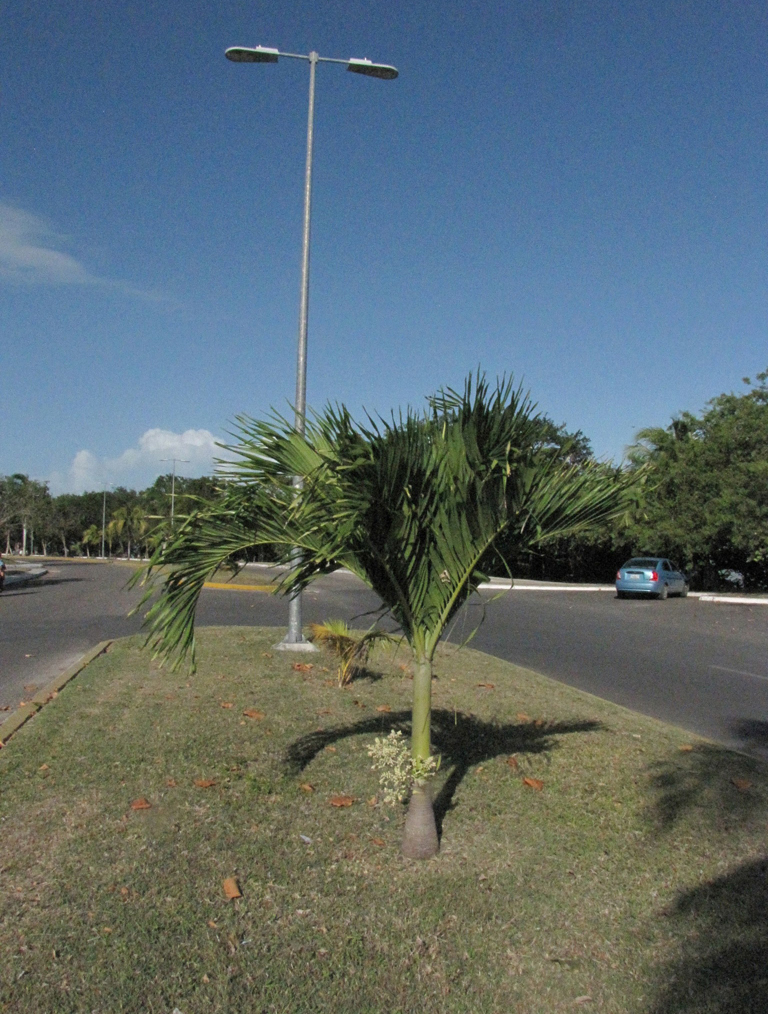Adonidia palm thrives well in tropical climate and is inherent to Philippines and is cultivated throughout the world’s tropic for many centuries. The annual temperature ranges from 22°C to 32°C, with a mean annual temperature of 27.5°C & average annual relative humidity of 80–90% & mean annual rainfall of 2,000–2,500 mm. It moderately tolerates salt and has good wind resistance. The plant grows quickly to the height of 6 feet but slowly thereafter by retaining proportions for long time. Adonidia palm could reach the height of 20 or 25 feet with trunks 5 to 6 inches and canopy spread of 5 to 8 feet. Leaves are pinately compound and about 4 to 5 feet long. Petiole is short and tomentose having two short triangular auricles at the base. The leaflets are regularly arranged and crowded. Flowers are unisexual, creamy-white, inconspicuous and occurs 2 to 3 clusters. Staminate flowers are bullet shaped having three imbricate sepals and 3 valvate petals which are longer than sepals. Pistallate flowers are ovoid having 3 imbricate sepals and 3 imbracite petals. Fruits are beaked, ovoid, 3-4 cm long and pale green that become bright red when matured. Seeds are ovoid and pointed apically.
Stems
Stems are upright, solitary and grey which grows 7 m tall and 25-30 cm in diameter and ringed with crowded leaf scars that fades with age.
Flowers and fruits
Flowers are unisexual, small and creamy white. Flowers are then followed by pale green fruits which are ovoid and measures 3-3.5 cm. Fruits ripen in December.
Culinary uses
- Fruits are used as a substitute for betel nuts.
- Fruits can be consumed raw.
References:
https://www.itis.gov/servlet/SingleRpt/SingleRpt?search_topic=TSN&search_value=817235#null
http://edis.ifas.ufl.edu/pdffiles/ST/ST65800.pdf
https://idtools.org/id/palms/palmid/factsheet.php?name=Adonidia+merrillii
Awesome
Comments
| Adonidia Palm Quick Facts | |
|---|---|
| Name: | Adonidia Palm |
| Scientific Name: | Adonidia merrillii |
| Origin | Palawan and neighbouring islands in the Philippines and east Coast of Sabah in East Malaysia |
| Colors | Pale green to red |
| Shapes | Ovoid, 3–4 cm long, beaked |
| Name | Adonidia Palm |
|---|---|
| Scientific Name | Adonidia merrillii |
| Native | Palawan and neighbouring islands in the Philippines and east Coast of Sabah in East Malaysia |
| Common/English Name | Adonidia Palm, Chinese Betel-Nut, Christmas Palm, Dwarf Royal Palm, Kerpis Palm, Merrill Palm, Manila Palm, Veitchia Palm |
| Name in Other Languages | Chamorro: Pugua Chena; Chinese: Ma Ni La Ye Zi; Dutch: Kerstpalm; French: Palmier De Noël, Palmier De Manille, Palmier Nain Royal, Palmier Des Philippines; German: Manilapalme, Weihnachtspalm; Italian: Palma Di Manila; Japanese: Manira Yashi; Malay: Palma Manila; Philippines: Lugos (Sulu), Bunga De Jolo, Bunga De China, Oring-Oring (Tagalog); Spanish: Palmade Manila, Chaguaramo Enano, Palma De Navidad; Thai: Mak-Nual, Maak Nuan, Paam Nuan; Vietnamese: Cau Trắng; Swedish: Manilapalm |
| Plant Growth Habit | Erect, solitary, unarmed, monoecious palm |
| Growing Climate | Tropical |
| Plant Size | 5–10 m high |
| Bark | Gray, rough, smooth |
| Trunk | Smooth, slender, grey |
| Stem | Slender, grey, 15–20 cm diameter |
| Leaf | Pinnate, strongly arched, 1.5 meters long |
| Flower | Inconspicuous, creamy-white, unisexual |
| Fruit shape & size | Ovoid, 3–4 cm long, beaked |
| Fruit color | Pale green to red |
| Seed | Ovoid |


